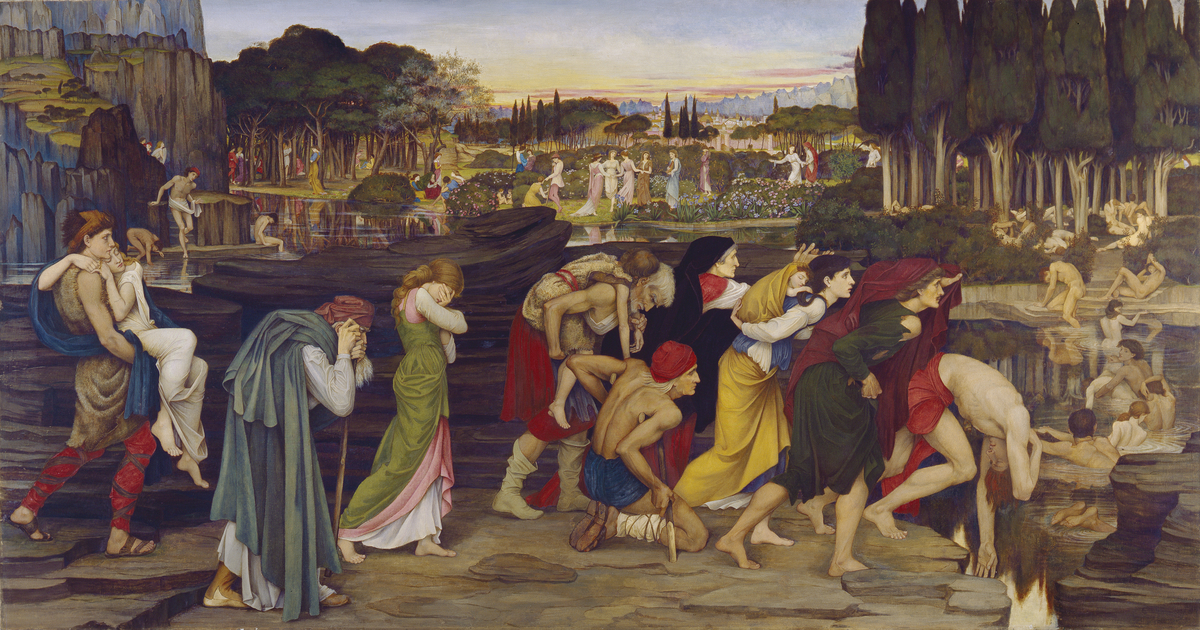The Waters of Lethe by the Plains of Elysium
John Roddam Spencer Stanhope 1829 - 1908
Summary
Scene depicting world weary pilgrims making their way to the river of forgetfulness. The tempera in which the work is painted gives a matt, chalky appearance. A procession of exhausted stooping figures, some young, some old, two carrying children, one man carriying a young sleeping woman, cross a barren, rocky plain in the foreground towards the river of forgetfulness on the right. They wear a variety of coloured classical-style draped garments, but although they are brightly coloured, they are dull compared to the people on the far side of the river. On the right, a trail of naked figures swim across the river, climbing out into a wooded area on the right of the far bank, where other naked figures lie and sit, sleepily adjusting their hair and stretching. On the far side of the river is a grassy landscape peopled with figures in bright robes, who dance and wander among flowering shrubs and trees. A bright cityscape that looks like the skyline of Florence is overhung by craggy blue mountains and lit by a lurid sunset in the distance behind the figures. More people prepare to cross the river from rocks on the left.
Display Label
Gallery text panel In Pursuit of Beauty Late Victorian Art and Design Improving the quality of British art and design had been a concern since the 1850s. The British Empire had expanded into new continents but it was the classical ideal of beauty, based on Ancient Greek and Roman culture that was still considered the model for serious art. The pursuit of beauty was a form of escapism from the mass-production of industrial Britain. As well as looking to the ancient world, artists and designers were delighted and inspired by the arts of Renaissance Italy, the Middle and Far East. Many of the paintings here feature a beautiful woman. Sometimes she is a passive, decorative form, but often she is a dark and brooding femme fatale, a symbol of seduction, deception and destruction. The 'fatal woman' may reflect late Victorian male fears as women campaigned for equal rights and new roles. The emphasis on colour, harmony and rhythm and simplifying the form of an object would become major concerns in the 20th century. They can be seen emerging here in the work of late Victorian artists and designers.
Object Name
The Waters of Lethe by the Plains of Elysium
Creators Name
Date Created
1880 (circa)
Dimensions
Canvas: 147.5cm x 282.4cm
accession number
1889.4
Place of creation
England
Support
canvas
Medium
tempera
gold paint
On Display
[G10] Manchester Art Gallery - Gallery 10
View all
Credit
Presented by the Artist
Legal
© Manchester Art Gallery

